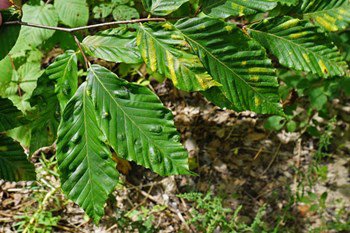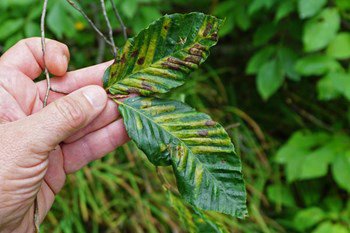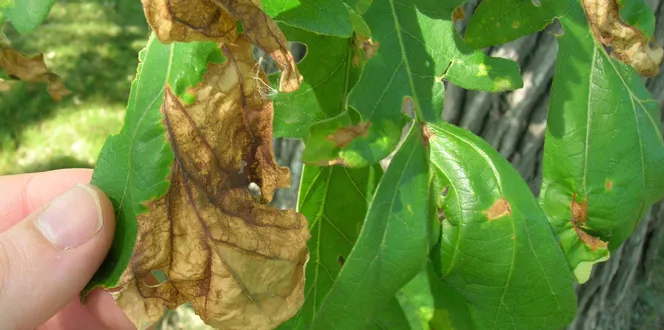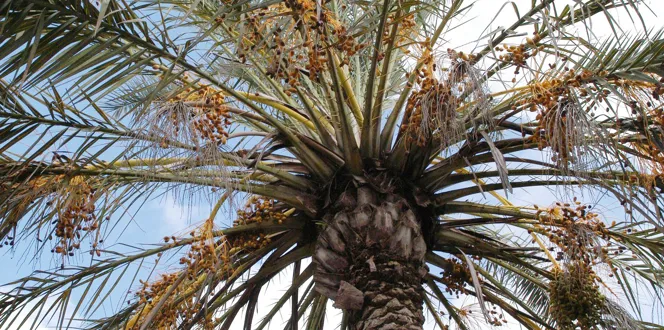The stately American beech tree holds a special place for many homeowners who enjoy basking in its shade.
Its wide-spreading canopy is a great refuge on sunny days and adds amazing bronze color in fall.
Beech trees can also live for 300 to 400 years, growing taller than 80 feet.
But our beloved beech trees are now under threat from a malady called beech leaf disease, which is spreading rapidly, killing both mature trees and young ones, too.
Let’s look at this beech tree ailment, what causes beech leaf disease, and how to treat beech leaf disease so you can better protect your trees from infection.
What Does Beech Leaf Disease Look Like?

Both native and ornamental beech tree species are susceptible to beech leaf disease.
The disease is associated with a nematode worm called Litylenchus crenatae spp. mccannii that infects beech buds and leaves. But knowing if your beech tree is impacted will take looking for some classic signs of infection. Spotting these symptoms early can help make a difference in catching a problem before it becomes too detrimental to your tree’s health.
You can see symptoms of the disease mostly in leaves and can be visible from leaf out in May until the leaves fall off in October. You’re looking for:
- Distinct darker stripes between the veins (best seen on the underside of the leaf) Curling and distortion
- Leathery texture
What Else Looks Similar To Beech Leaf Disease?

Several other tree problems can look like beech leaf tree disease, which can make it harder to identify.
Some common ones include:
- Woolly beech aphid can lead to leaf deformation and discoloration, but the leaves are often rolled or curled and don’t show banding between leaf veins like those impacted by beech leaf disease
- Erineum gall shows damage occurring between leaf veins like beech leaf disease, but the banding is not dark and you’ll find white to red patches on leaf undersides
- Beech anthracnose causes various degrees of discoloration and deformation of leaves similar to beech leaf disease, but you’ll also find lesions that lead to dead brown leaf tissue surrounded by yellow discoloration
Why Is Beech Leaf Disease A Concern?
Beech leaf tree disease can kill a mature tree within 6 to 10 years.
But it is most damaging to young trees, which can die in less than 5 years after the first signs of infection appear. In places where the disease is well established, it has proven fatal to 90% of saplings.
Are There Any Beech Leaf Disease Treatments?
Unfortunately, there is no proven remedy yet for beech leaf disease, however, we are actively conducting research and testing different treatments for effectiveness.
If you see signs or symptoms of the disease, reporting it to your local arborist is vital to ensure they know where it’s spreading and can help contain it.
How Can You Help Stop Beech Leaf Disease From Spreading?
When it comes to how to treat beech leaf disease, there are some things you can do.
To slow the spread of the disease, remember these tactics in addition to talking to your local arborist for some recommendations and next steps:
- Avoid moving beech tree branches, twigs, leaves and seedlings from affected areas.
- Closely inspect any beech nursery stock for symptoms of beech leaf disease before purchase and planting.
- Avoid moving soil or other organic matter from affected areas.





